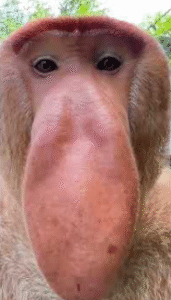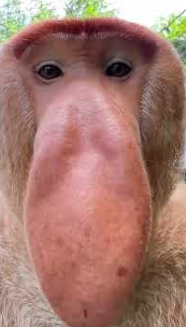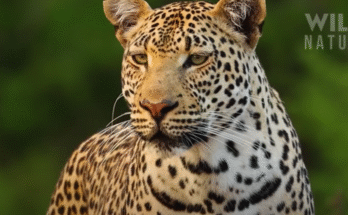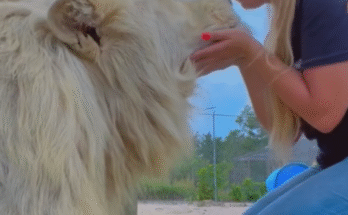The proboscis monkey (Nasalis larvatus)
 The proboscis monkey (Nasalis larvatus) is one of the most peculiar and fascinating primates in the animal kingdom. Native to the island of Borneo in Southeast Asia, this species is best known for its unusually large, pendulous nose, especially prominent in males. Often referred to as the “long-nosed monkey,” the proboscis monkey is not only a biological wonder but also a vital species in the delicate ecosystems of Borneo’s mangrove swamps and lowland rainforests.
The proboscis monkey (Nasalis larvatus) is one of the most peculiar and fascinating primates in the animal kingdom. Native to the island of Borneo in Southeast Asia, this species is best known for its unusually large, pendulous nose, especially prominent in males. Often referred to as the “long-nosed monkey,” the proboscis monkey is not only a biological wonder but also a vital species in the delicate ecosystems of Borneo’s mangrove swamps and lowland rainforests.
watch video and read more👇💜
Anatomy and Appearance
The proboscis monkey stands out because of its most notable feature — the long, fleshy nose. In males, this nose can grow up to 7 inches (18 cm) in length and hangs down past the mouth. Scientists believe the large nose plays a role in sexual selection, as it resonates vocalizations that may attract females and intimidate rival males. Females and young monkeys also have large noses, but they are not as exaggerated.
Aside from the nose, these monkeys have potbellied bodies, long tails, and webbed feet, which make them excellent swimmers. Their fur is generally reddish-brown on the back with lighter undersides. Males are significantly larger than females, with males reaching up to 24 kg (53 lbs), while females typically weigh around 12 kg (26 lbs).
Habitat and Lifestyle
Proboscis monkeys are endemic to Borneo, where they are mostly found in coastal mangroves, riverbanks, and swamp forests. They are arboreal and diurnal, spending most of their time in the trees during the day. Interestingly, they are one of the best swimmers among primates, often seen crossing rivers in search of food or new territory. Their partially webbed feet and hands allow them to swim long distances and even dive underwater to escape predators.
They live in small groups called harems, typically consisting of one adult male, several females, and their offspring. These groups often band together at night to sleep in larger troops for protection.
Diet and Digestion
The proboscis monkey has a complex stomach that can digest tough leaves and unripe fruits that are typically toxic or indigestible to other primates. They are folivores and frugivores, meaning their diet primarily consists of leaves, seeds, and fruits. The fermentation process in their gut helps break down cellulose, but it also means they must eat carefully — overeating ripe fruit can cause bloating and even death.
Conservation Status
Sadly, proboscis monkeys are classified as Endangered on the IUCN Red List. Their populations have been declining due to habitat destruction from logging, palm oil plantations, and human settlement. Poaching and hunting also contribute to their decline. It is estimated that fewer than 7,000 proboscis monkeys remain in the wild.
Conservation efforts are ongoing in Borneo to protect this unique species. Protected areas, ecotourism, and environmental awareness are helping raise the profile of the proboscis monkey, but more action is needed to ensure its survival.



